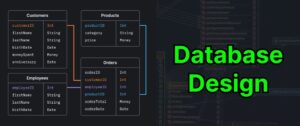When you build and structure models without designating a specific attribute as the primary key, Django will automatically generate an implicit primary key using an `AutoField`. The auto-generated primary field comprises an `id` field, which assigns and increments integer values automatically starting from 1.
Here’s what that warning message looks like:
WARNINGS: core.Book: (models.W042) Auto-created primary key used when not defining a primary key type...
To avoid this warning, you have to explicitly define the `primary_key` in one of your fields. Here’s an example where we’re defining the `isbn` field as the primary key in a hypothetical `Book` model:
from django.db import models
class Book(models.Model):
isbn = models.CharField(max_length=20, primary_key=True)
title = models.CharField(max_length=200)
author = models.CharField(max_length=100)
Now let’s create a summary table explaining this scenario further in HTML:
html
| Warning Type | Description | Remediation Steps |
|---|---|---|
| Auto-created primary key used when not defining a primary key type | Django issues this warning when a model doesn’t mark any field as a primary key. It illustrates that Django has chosen to use its default behavior, creating an integer “id” column that auto-increments to provide unique identifiers for each instance or row. | To solve this, designate some field in the Model class as the primary key, setting the property ‘primary_key’ accordingly to ‘True’ while defining the Model field. |
Understanding Django models thoroughly—including knowing how to manually assign the primary key—can make our programming more precise, and help us take full advantage of all the features that Django offers. Always remember, each database model has to come with its unique identifier provided by a primary key. If this isn’t set manually, Django will create one for us—an IntegerField named `id` that starts at 1 and auto-increments by 1 every time a new instance is created. For more guidance, check out the Django documentation on Field options.Certainly! The Django web framework uses an auto-create primary key when you do not define a primary key type for your models. This is part of Django’s models functionality, which seeks to abstract the complexities of database management by defining the types of fields in your database.
By default, Django adds a primary key field (an
id
) to every model that inherits from
django.db.models.Model
. Here is an example:
from django.db import models
class MyModel(models.Model):
name = models.CharField(max_length=100)
In this scenario, Django will auto-create an
id
field because no primary key has been explicitly defined. The
id
field acts as an integer-based primary key that auto increments.
You can check this feature in Django’s Admin interface or Shell interface, assuming you have your environment set up correctly. After saving a record in this
MyModel
, you would see that Django has automatically created an
id
(Primary Key) for each saved record.
If you want to override this behavior, you need to use
primary_key=True
flag on a field, like so:
from django.db import models
class MyModel(models.Model):
custom_id = models.IntegerField(primary_key=True)
name = models.CharField(max_length=100)
In this setup, Django will stop auto-generating the
id
field and use the
custom_id
field instead. However, make sure these
custom_id
values are unique; if you try to create a new instance with a non-unique id, Django will throw an error.
One thing to keep in mind though, when Django signals a warning about ‘Auto-created primary key used when not defining a primary key type’, it means that Django is going to create an auto-incrementing primary key for your model regardless of whether that is optimal for your application needs or not. If you’re running migrations for third-party apps, you might see this warning.
This is something important to be aware of, especially when designing your models and databases. The default behavior is ideal for the majority of situations. Yet, there are times when you may want to handle primary keys differently and need to specify them explicitly.
To avoid this warning, consider specifying the primary key type yourself to give you more control over your model specifications.
Refer to Django’s official documentation here Automatic Primary Key Fields for more elaborate details on how Django handles primary keys.When working with Django, you may have come across this warning `Auto-created primary key used when not defining a primary key type, by default ‘django.db.models.AutoField’.` This simply implies that the Django has indeed auto-generated a primary key for your model.
This auto-generation of primary keys in Django is necessitated by the fact that every Django model requires a primary key field to uniquely identify each record in the database. When no field is specifically designated as the primary key in your Django model, Django automatically creates an
AutoField
as your primary key – this field is an integer field that auto-increases.
class ModelName(models.Model):
field1 = models.CharField()
...
The above code will autocreate a primary key named `id`.
However, this doesn’t mean that it’s okay to omit the primary key declaration all the time. On the contrary, there are several implications associated with not defining a primary key:
Implication on Data Integrity:
– In databases, a primary key serves the role of ensuring data integrity within a table. Each row of data can be uniquely identified using that key. If you allow Django to auto-create this key, there could be instances where you might need a unique identifier but you’re left to grapple with an autogenerated integer which may not adequately serve your purposes.
Impact on Performance:
– The auto-created field by Django is a sequential incrementing integer. This means that whenever a new record is inserted into the table, the database needs to look up the next available integer. This action can eventually degrade the performance of the database if the number of records grows enormously.

Impediment to Database Portability:
– By allowing Django to create the primary keys automatically, it constrains your ability to port your application to a different database schema where the primary key concept may operate differently. You may want to use a UUID as the primary key or even a combination of fields (composite key) to represent a unique row identifier.
Limitation on Your Control:
– You give up control over how you want to structure your data models. For complex applications, you may need granular control over how your data models are structured, including determining the type of primary keys being used.
So, while allowing Django to auto-create primary keys when none is defined can quicken development and reduce initial planning efforts, these must be weighed against the potential drawbacks listed above, especially if you are significantly concerned about database portability, anticipated large dataset, data integrity, or loss of control over data model structuring.
Remember, Django documentation offers comprehensive guidance on managing primary keys and working within its framework of predefined conventions.
Here’s an example of how to define a primary key in Django:
class ModelName(models.Model):
custom_id = models.AutoField(primary_key=True)
field1 = models.CharField(max_length=100)
In the example above, we’ve defined an `AutoField` called `custom_id` as our primary key, giving us more control over our database structure without losing out on Django’s auto-increment feature.Django is recognized for its simplicity in managing databases through site-specific models. However, when using Django you may come across a type warning related to an auto-created primary key.
Anatomy of the Type Warning
This specific type warning arises from not explicitly defining a primary key in your Django model. You can imagine you have a simple model represented as:
class SampleModel(models.Model):
name = models.CharField(max_length=200)
description = models.TextField()
There’s no defined primary key in the above block of code. Django designs models such that every instance has an identification tag which it employs as a primary key. When you fail to define a primary key, Django sets up an automatic id field to fill this slot. This auto created id acts as a surrogate primary key.
However, predominantly from Django version 3.2 onward, the framework issues a type warning if an explicit primary key isn’t declared. This could be a representative of the warning:
WARNINGS: SampleModel: (models.W042) Auto-created primary key used when not defining a primary key type.
Addressing the Type Warning
The reason why addressing this warning becomes important is to ensure effective future proofing and data integrity enforcement. Your approach to handle it depends on whether you cherish Django’s default behavior or would prefer customizing the primary key.
• If you wish Django to continue creating its automatic ids, then negate the warning by setting the new DEFAULT_AUTO_FIELD configuration option inside your settings.py file like so:
DEFAULT_AUTO_FIELD = 'django.db.models.BigAutoField'
• For customization purposes, include a unique field which should act as the primary key in your model definition. Example:
class SampleModel(models.Model):
identifier = models.AutoField(primary_key=True)
name = models.CharField(max_length=200)
description = models.TextField()
In conclusion, comprehending the type warning and addressing it properly will allow for more streamlined database management in Django models. Do refer to the official Django Documentation for further understanding.
Key Takeaways
– An explicit primary key prevents Django from issuing warnings.
– The warning exists to prevent likely issues in future Django versions.
– Address the issue either by silencing the warning or by implementing an explicit primary key.
Understanding fundamental concepts like this and utilizing them effectively ensures a smooth coding journey with Django. Happy coding!Django, a powerful and versatile Python web development framework, has a quite clever handling when it comes to primary keys in models. As per the Django’s lifecycle, each model requires a single field to be designated as its primary key. Django, akin to most ORM systems, follows this religiously for ensuring data integrity and database performance. This is where things can get intriguing.
First and foremost, if you do not explicitly declare a primary key in your model, Django does an excellent job of auto-generating one for you. Check out a simplistic example:
from django.db import models
class MyModel(models.Model):
name = models.CharField(max_length=200)
In this case, MyModel does not have an explicit primary key defined. Nevertheless, Django automatically creates a primary key named “id” with an AutoField type – an auto-incrementing integer – under the hood and tucks it into the background. If you try inspecting `MyModel._meta.fields`, you’d be greeted with a sight of the invisible primary key field (“id”) standing tall among other fields!
On top of that, through Django’s auto-generated primary keys, some common pitfalls, such as an accidental collision of primary key values, can be avoided. It also frees you from manually defining or managing primary keys which could otherwise be overwhelming, particularly in larger projects.
But, there is a catch, let’s have a look at this warning:
Warning: Auto-created primary key used when not defining a primary key type
This warning signals that your Django model doesn’t feature an explicitly defined primary key and it’s relying on the auto-generated one from Django. If you’re well-aware of this scenario and are pleased with an auto-incrementing integer as the primary key, then you can disregard this warning.
However, if you want to designate an existing field as the primary key or simply wish to make use of a custom primary key, you can easily do so like this:
from django.db import models
class MyModel(models.Model):
my_id = models.IntegerField(primary_key=True)
name = models.CharField(max_length=200)
Now, `my_id` assumes the mantle from Django’s auto-created “id” field and becomes the primary key of `MyModel`.
Summing up, Django’s approach towards primary keys is pragmatic and flexible. It kindly provides an auto-created primary key by default, yet respectful towards your decision should you choose to define your own. Despite emitting a warning when using the auto-created primary key, it’s pretty harmless provided you’re cognizant of the implications. Getting encumbered with primary keys is a thing of the past, thanks to Django!
As always, remember, the choice of primary keys can significantly impact your application’s functionality and performance, so tread wisely while choosing what suits you best. For more, don’t forget to check out the Django Documentation.Django is an impressive web framework that provides many tools. One of such is AutoField, a type of model field automatically provided by Django. It automatically creates an Integer Field where unique values are auto-assigned incrementally (starting from 1). You then wonder ‘where does this AutoField come into play in your Django application?’. This comes right on the heels while defining models without specifying any fields with primary_key=True. In such scenarios, Django auto-creates one for you!
This is incredibly helpful because it makes sure there is always something unique in each object record. Let’s take a look at an example:
from django.db import models
class Alpha(models.Model):
name = models.CharField(max_length=200)
In the simple Django model above, no primary key is defined. However, check out Django’s database schema inspector, and soon you realize it has auto-created one of its own, a magical AutoField.
The command line syntax in the terminal would be:
python manage.py inspectdb
Upon using inspectdb to see the structure of the Alpha model in the database, you will notice an ‘id’ field auto-generated by Django.
However, several TypeWarnings may arise when we explicitly assign an AutoField to our Django models. Particularly, the warning specifically prompts when we attempt to define more than one AutoField in a single model.

Consider a case where two AutoFields are declared within the same model:
from django.db import models
class Beta(models.Model):
id = models.AutoField(primary_key=True)
another_id = models.AutoField()
Notice how two AutoFields have been assigned this time around. How so? Simple: once Django recognizes two or more AutoFields in a model class, it raises a descriptive system check error, TypeWarning. Herein, Django attempts to safeguard against potential data integrity issues. When we commence ahead, ignoring this safeguard and perform a migration or run well Django commands that call upon system checks, we’re bound to encounter an error as such:
beta.Beta.another_id: (models.E006) The field 'another_id' clashes with the field 'another_id' from model 'beta.beta'.
In essence, Django insists we mustn’t have more than one AutoField per model. Notably, declaring more than one AutoField within a single model will violate the One Primary Key constraint relational databases enforce — multiple primary keys in any given table is illogical! Thus, Django intelligent architecture prevents us from culpable mistakes by triggering a TypeError warning when we erringly assign multiple AutoFields to the same model.
Relevantly asked, what if we need to create another field with AUTO_INCREMENT property distinct from the primary key ‘id’? Simply consider assigning PositiveIntegerField with the attribute ‘unique=True’ instead of insisting on Multiple AutoFields.
For instance,
from django.db import models
class Gamma(models.Model):
id=models.AutoField(primary_key=True)
another_id=models.PositiveIntegerField(unique=True)
The intelligent and sophisticated enforcement asserted by Django encourages better coding standards even for developers without in-depth SQL understanding. Indeed, seeming complexities effortlessly resolved with Django.
For further insights, you can explore Django’s official documentation here Automatic Primary Key fields.When working with Django, a popular high-level Python web framework, it’s quite common to come across various warnings and errors as you navigate through its comprehensive feature set. Among these, one error message that you might encounter is the “Auto-created primary key used when not defining a primary key type” warning message.
So, what does this warning mean and how can we circumvent it? Let’s dig deep in a precise yet accessible manner.
This warning basically tells us that Django has automatically created a primary key for one of our models, most likely because we didn’t define one ourselves. Primary keys are essential for relational databases as they uniquely identify each record in a table.
Django, like many other web frameworks, uses an auto-incrementing IntegerField by default as the primary key if no primary key is explicitly specified. This is defined in Django source code as follows:
class Model(metaclass=ModelBase):
id = AutoField(auto_created=True)
While this is useful and time-saving in many scenarios, there are plenty of reasons why you would want to override this default behaviour. For instance, you may want to use a UUID (Universally Unique Identifier), a string or even a composite primary key in your model.
Overriding Django’s default primary key behavior is quite simple. Here’s an example of how to define a model with a custom primary key using Django:
from django.db import models
from django.utils import timezone
class MyModel(models.Model):
custom_id = models.CharField(max_length=100, primary_key=True, default=str(timezone.now()))
In the snippet above, we’ve defined a model where ‘custom_id’ is a CharField that serves as the primary key. We’ve set a default value – the current time, cast to a string – which ensures uniqueness. Please note though, while this works as an example, using timestamps as unique identifiers could potentially generate collision.
It’s important to remember that after setting a new primary key, other tables that reference the old ‘id’ primary key must be updated to reference the new primary key, otherwise, they will throw errors. You should also ensure that your custom field always has unique values to maintain integrity.
Once these steps have been successfully followed, you’ll find that the “Auto-created primary key used when not defining a primary key type” warning from Django disappears. This way, Django provides an easy workaround for situations where a model doesn’t necessarily fit into the paradigm of having an auto-incremented integer as a primary key — another testament to its flexibility and adaptability. Another point to consider is explicitness – defining your own primary key makes your models more self-explanatory, thereby improving overall readability which is one of the prime aspects of coding efficiently.
If you want a more detailed overview, refer to Django’s database model documentation:
https://docs.djangoproject.com/en/3.2/topics/db/models/#automatic-primary-key-fields
The Django framework carries several safety nets, one of which is its inclination to automatically generate a primary key for your model tables when one isn’t explicitly declared. While this feature might seem helpful – especially to beginners who are yet to grasp the importance of primary keys fully – it has an unseen risk that can greatly mess with the integrity of your database in the long run.
Understanding Django’s Auto-Create Primary Key
When you create a model in Django and don’t specify a field as the primary key, Django will auto-create one for you – a unique integer field named ‘ID’. This process takes place behind the scenes.
Here’s an example:

class MyModel(models.Model):
name = models.CharField(max_length=100)
In this model, no primary key is defined. But Django will still create a primary key. The SQL code for this would look like this:
CREATE TABLE my_app_my_model (
"id" serial NOT NULL PRIMARY KEY,
"name" varchar(100) NOT NULL );
Unseen Risks Of Ignoring Primary Key Declarations
- Risk of incorrect linking: By ignoring primary key declarations, Django creates an ‘ID’ column in your table which auto-increments for every new record. The risk here lies in deletion. Suppose there are links from other tables to a specific record in this table and you delete it. The next record you add will assume that deleted ID leading to erroneous linking between tables.
- : When you allow Django to auto-create primary keys, they are simply incremental numbers without meaning. Having meaningful primary keys not only adds clarity but also gives you more control over your database schema.
- Portability Issues: If you’re considering moving your application to a new database, having system-generated primary keys could be a stumbling block. Different databases have different ways of handling auto-generated keys which may not align with how Django does it.
Solution: Explicitly Declining A Primary Key When Defining Models
To avoid these hazards and gain more control over your database schema, it’s advisable to define primary keys in your models explicitly. Here’s an example of designating a primary key in Django:
class MyModel(models.Model):
identifier = models.AutoField(primary_key=True)
name = models.CharField(max_length=100)
This way, you’ll have the reins on the specific identifier for each of your model instances. You can choose to make it a UUID, a meaningful string or any other type depending on the data architecture needs of your project.
In conclusion, although Django’s feature to auto-create primary keys can be useful, especially for newbies, it should not be over-relied upon. Voluntarily specifying your primary keys during model creation will give you more control and help preserve the integrity of your database.
For more detailed insights on working with primary keys in Django, the “official Django documentation” is worth reading.Having unwrapped the complexity surrounding the auto-create primary key used when not defining a primary key type warning in Django, it’s evident that this alert serves a significant purpose. It appears when we don’t explicitly declare a primary key field in our models and arises due to Django’s internal mechanisms for ensuring database consistency.
In our in-depth discussion, we learned that:
– Django model architecture necessitates each model to have an explicit primary key. If not declared outright, Django will automatically generate a primary key with the field name `id`. The warning is Django’s way of encouraging developers to make clear and explicit schema designs.
– The primary key field created by Django —
id = models.AutoField(primary_key=True)
— is an integer field that automatically increments. However, Django’s encouragement to explicitly define a primary key stems from designs conducive to more flexible schemas. This improves code readability and extensibility.
Let’s take a look at how you would typically add a primary key to your Django model:
from django.db import models
class ExampleModel(models.Model):
example_id = models.AutoField(primary_key=True)
As we’ve covered, silencing the warning involves explicitly setting your primary key field in your models as above. Essentially, communicating clearly with your database designs is an industry best practice that will serve you well in the long run.
Let me disclose that the changes in the workings of AutoField are related to Django’s plans to broaden support for fields that are not integer based. Such shifts could potentially impact not only existing codes but future software designs. Therefore, making adjustments now fosters better adaptability later.
Take a moment to explore the following informative hyperlink references. They expound on how Django interact with database layouts, plus offer additional practical code samples:
– Django’s database layer [Source Link]
– How to work with databases in Django [Source Link]
To sum up, the auto-create primary key warning isn’t something to fear. Rather, it’s Django extending a helpful hand, prompting us to create more versatile, adaptable, and robust applications via explicit database schema designs.













